Farms in the United States are facing a major labor shortage. While the reasons for these labor shortages vary and are complicated, four of the most important include aging farm laborers, declining interest in farming, stiffer immigration rules, and higher wages.
In our Farm Data Report, we discovered that 73% of respondents were extremely concerned about a lack of skilled labor.
Here’s a closer look at farm labor trends and the issues that agricultural labor in the United States is facing.
1. Aging Laborers
59.4 Years
Farmers have an average age of 59.4 years, and only a few young people are expected to fill the gaps when they retire.
65 Years Old
The average retirement age in the United States is 65 years old, yet many farmers are well past this age but continue to work to fill labor gaps.
⅓ of 3.4 Million
One-third of America’s 3.4 million farmers were over the age of 65, with another million falling somewhere between the ages of 55 and 65.
2. Declining Interest In Farming
While technology and office jobs are the most
in demand in the United States, farming is one
of the least popular careers available.
Young people are increasingly looking for work in cities, with little to no interest in agriculture.
3. Stiffer Immigration Rules
The H-2A program allows US companies or agents to hire foreign workers for temporary agricultural labor, but the regulations are tight.
There is fierce competition for domestic labor and a federal crackdown on both documented and undocumented immigrants since the pandemic.
4. rising Wage demands

2.9%
increase in annual rate for average agricultural worker salary in the United States.
$25.58
average hourly wage for hired farm managers while
$15.50
hourly rate for regular farm workers in 2022.
$22.48
average hourly rate for supervisors.

how can bear flag help?
Farm labor shortages in the United States have been a problem for decades. Fortunately, technological advancements have provided farm operators with the ability to automate mundane operations while conserving manpower.
Bear Flag’s self-driving tractors are dedicated
to breaking the one man, one tractor paradigm. With our robotic technology, we ensure that farmers can do more with less and will be able
to withstand the onslaught of labor shortages.
Resources:
- https://www.bearflagrobotics.com/resources/data-report-on-the-state-of-farming/
- https://agamerica.com/blog/the-impact-of-the-farm-labor-shortage/
- https://www.nasi.org/learn/social-security/retirementage/#:~:text=Currently%2C%20the%20full%20benefit%20age,they%20will%20be%20reduced%20more.
- https://www.cfdc.org/national-ag-day-2021/
- https://stacker.com/stories/1420/100-least-popular-jobs-america
- https://www.bbc.com/future/bespoke/follow-the-food/the-ageing-crisis-threatening-farming/
- https://www.bearflagrobotics.com/resources/data-report-on-the-state-of-farming/
- https://www.uscis.gov/working-in-the-united-states/temporary-workers/h-2a-temporary-agricultural-workers
- https://www.politico.com/news/2022/04/14/georgia-farm-labor-indictments-pressure-biden-to-move-on-farmworker-reforms-00025380
- https://www.ers.usda.gov/topics/farm-economy/farm-labor/#wages
- https://www.indeed.com/career/farm-worker/salaries
- https://www.ers.usda.gov/topics/farm-economy/farm-labor/#wages

